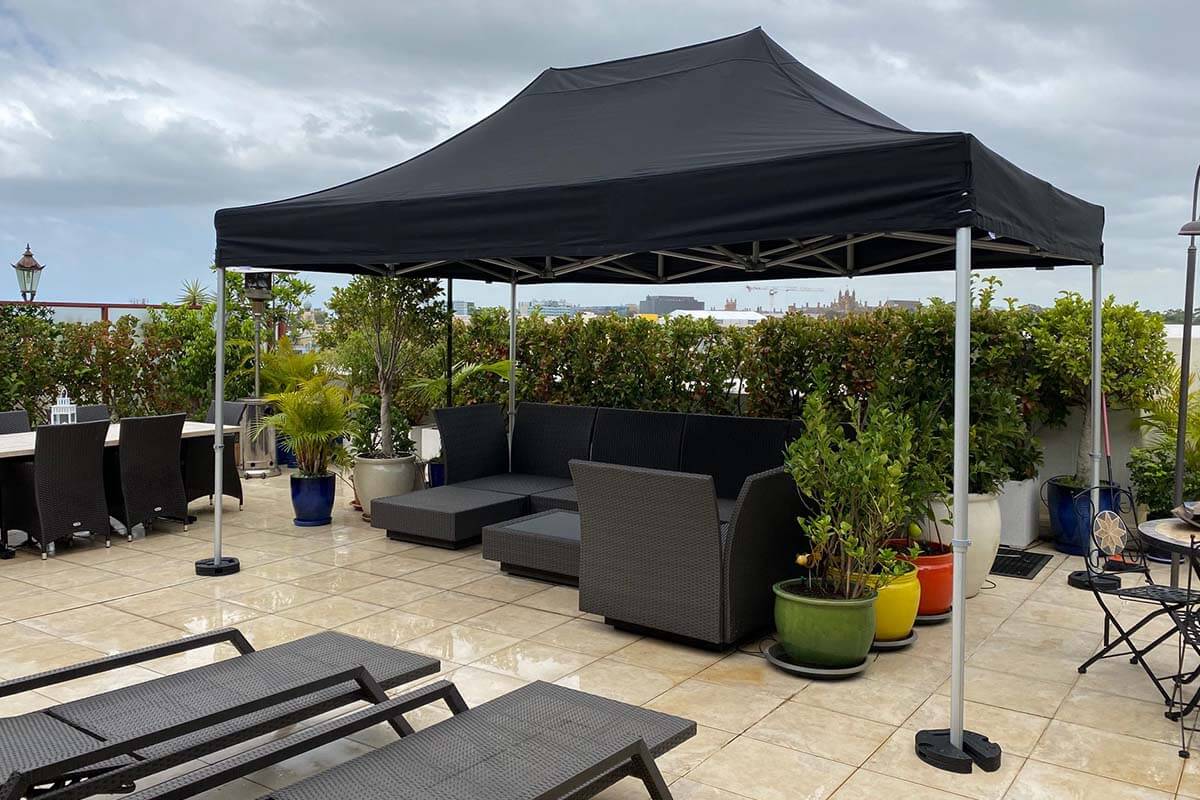
“Hold down equivalent”, or “equivalent anchorage”, refers to any kind of weighting system that is equivalent in effect on a marquee as block weights.
We will provide anchorage requirements as weights (in kilograms). The weighting system you use doesn’t necessarily need to be a concrete block or a leg weight, it can be another fixing that has an equivalent anchorage to the concrete blocks or leg weights.
Weighting requirements for our marquees
Our weighting requirements in this table for the different marquee sizes.
| Weight vs Wind | 15kg per leg | 30kg per leg | 45kg per leg | 60kg per leg | 75kg per leg | 90kg per leg |
| 2.4x2.4m | 52 | 68 | 80 | 91 | 101 | 110 |
| 3x3m | 47 | 61 | 73 | 83 | 92 | 100 |
| 3x4.5m | 43 | 56 | 66 | 75 | 83 | 90 |
| 3x6m | 33 | 43 | 52 | 59 | 65 | 71 |
| 4x4m | 40 | 52 | - | - | - | - |
| 4x8m | 28 | 44 | - | - | - | - |
The amount of wind (in km/h), including gusts, a marquee can withstand for a given amount of weighting on each of the legs
Our marquees have been specifically engineered with our cast iron weights, but there are a variety of other marquee weighting solutions available. Each method has its own pros and cons which we detail in the linked article.
Example of alternative hold down equivalents
Alternative solutions to leg weights may include:
- A Dynabolt that is driven into concrete that has a pull out force that exceeds the hold down equivalent requirement
- A fixed structure with solid foundations - ie a house
- A mobile structure that has a weight that will exceed our requirements - i.e. a car, van, truck with a good tie off point
What about temporary anchors like pegs
Temporary tie points such as pegs cannot be relied upon to provide the hold down equivalent required unless they are properly tested prior to being installed.
This is because different soil classifications (i.e. soft soil vs clay), installation methods (i.e. drive angle), and peg type (i.e. screw type, T-type, peg length) affect the pegs ability to provide equivalent anchorage as required.
To test a temporary peg, you must use a scale to measure pull out strength of the peg at the same angle as the rope that will secure the marquee to ensure it can provide the appropriate anchorage.
